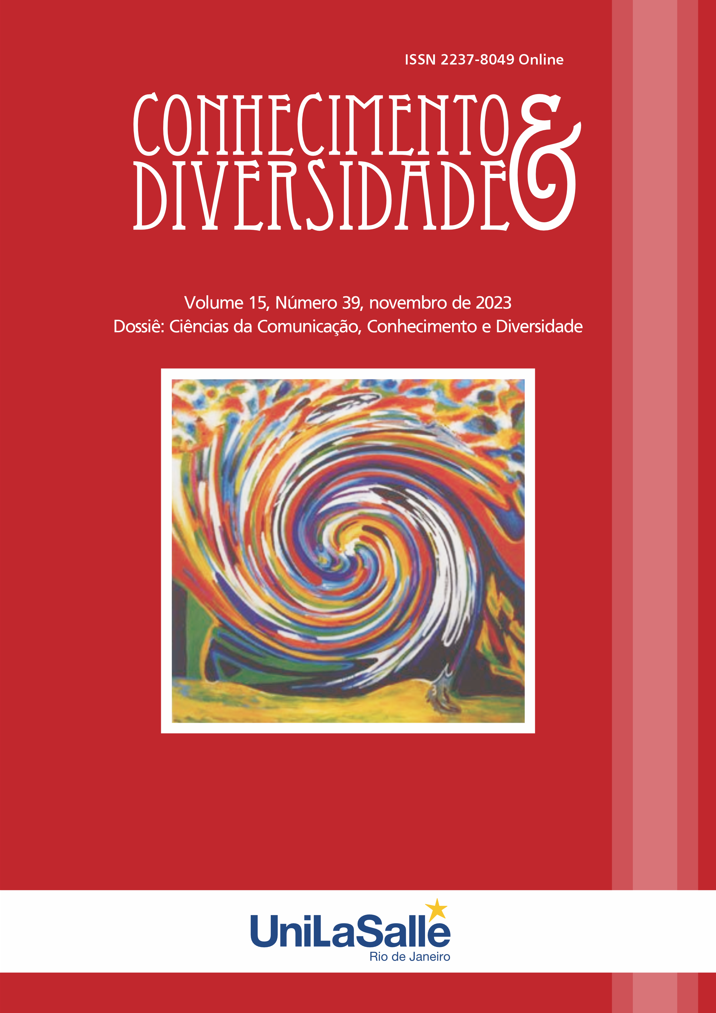COMUNICAÇÃO DA VIOLÊNCIA NO CINEMA
O CASO DO FILME "LES AILES DE L'AMOUR" DE ABDELHAÏ LARAKI
DOI:
https://doi.org/10.18316/rcd.v15i39.11128Palavras-chave:
Comunicação, Violência, Cinema, Mensagem, Abdelhaï LarakiResumo
A violência é inerente à existência do ser humano. Ela é criativa e destrutiva. Da violência surge uma vida, uma alma e uma obra de arte. E é a violência que subverte a ordem, semeia o caos e desloca os vínculos. A violência é a justificação para um ato impetuoso. Ela pode ser tanto causa quanto efeito. Por outro lado, a violência pode transmitir uma mensagem de raiva, insatisfação, rebeldia, amor e outros sentimentos, assim como pode ser uma mensagem em si mesma. Essa noção, dada a sua importância, é um dos centros de interesse de várias disciplinas artísticas, desde a arte rupestre até a arte moderna. O sétimo arte, por outro lado, não é exceção e torna a violência um tema a ser tratado e um meio de lidar com outros assuntos. Como o cinema é um meio de comunicação audiovisual, ele transforma a imagem, as técnicas de encenação e as novas tecnologias em um arsenal comunicativo completo para abordar a noção de violência. No entanto, quando ouvimos falar de violência no cinema, pensamos inicialmente em filmes de ação americanos, filmes de terror ou filmes de aventura épica que ilustram a luta entre o bem e o mal por meio de violência física, verbal e psicológica. Assim, a comunicação da violência na arte cinematográfica enfrenta um choque: violência e contraviolência estão ligadas por meio de uma ligação causal que constitui um círculo vicioso onde a ação produz uma reação que, por sua vez, se torna uma ação estimulando uma reação. Abdelhaï LARAKI, em seu filme "Les Ailes de l'Amour," faz da violência não apenas o produto das injustiças prevalecentes na sociedade, mas também um meio de comunicação que utiliza a imagem, a música, o fora de cena e a iluminação como canais que permitem a disseminação da mensagem do diretor. Entre a comunicação violenta na trama, a comunicação da violência dentro de uma microsociedade representada pelo enquadramento espacial e a mensagem que o diretor transmite aos espectadores, não deveríamos nos questionar sobre as formas de comunicação violenta dentro da obra de LARAKI? A imagem não transmite uma mensagem violenta ao espectador? As várias crises não são o resultado de uma comunicação de crise mal-sucedida? Essas são as perguntas que tentaremos responder em nossa intervenção intitulada: Comunicação da violência no cinema: O caso do filme "Les Ailes de l'Amour" de Abdelhaï LARAKI.
Referências
BRANCHE, R. La violence coloniale. Enjeux d’une description et choix d’écriture. Tracés. Revue de Sciences humaines, n. 19, p. 29–42, 2010.
DADOUN, R. La violence Essai sur l’Homo violens. Éditions Hatiered, Paris, 1993.
GONTARD, M. LA VIOLENCE DU TEXTE - Etudes sur la littérature marocaine d’expression française. Harmattan, Paris,1981.
MEHDI, F. A l’écoute des écrivains marocains. Virgule éditionsed. Tanger, 2018.
MICHAUD, Y. La violence. Paris: PUF, 2012. 2012.(Que sais-je ?).
RENÉ, G. La violence et le sacré. Éditions Bernard Grasseted. Paris, 1972.
Downloads
Publicado
Edição
Seção
Licença
Copyright (c) 2023 Amrani Oussama, El Arbi El Bakkali

Este trabalho está licenciado sob uma licença Creative Commons Attribution 4.0 International License.
Conforme recomendado pelo o Public Knowledge Project, a RCD adota para seus artigos uma licença CREATIVE COMMONS: Atribuição CC BY 4.0.
Esta licença permite que outros distribuam, remixem, adaptem e construam sobre o seu trabalho, mesmo comercialmente, desde que lhe dêem crédito pela criação original.
Esta é a licença mais adequada oferecida.
Recomendado para a máxima divulgação e uso de materiais licenciados.



